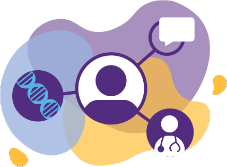
Consultation period
Like all prescription medicines, gene therapies can only be prescribed by a doctor. This is why the first step is a consultation between you, your family, and your doctor to find out if you are eligible (able to receive gene therapy).
There are multiple steps involved, including:
- Initial discussion about treatment and goals
- Understanding costs and financial assistance
- Testing and screening procedures
This process helps everyone involved understand the first step in considering gene therapy.
- Discuss the risks, side effects, and benefits of gene therapy.
- Provide guidance regarding assistance and other resources.
- Explain what is required to receive gene therapy.
- Make referrals to see other specialist healthcare professionals in the gene-therapy process.
- Make several appointments with different specialists who are responsible for running different tests and procedures.
- Keep the results of these tests organized and ready for a discussion with your doctor.
- Bring a family member or friend to your appointments to ask questions and help you take notes.
- Set up time to meet with a
patient advocate or other member of your healthcare team to discuss resources and assistance that may be available. - Talk to other patients and families who have gone through the gene-therapy process.
Throughout the consultation period, your healthcare team will help you to understand the gene-therapy process and what it may look like for you.
You may have questions along the way. Make notes on your phone or on a sheet of paper so you have them at each appointment.
Your healthcare team will ask you for

Planning period
Before starting any gene-therapy treatment, it is important to recognize that this process may require changes to your normal routine.
For example, you may need to think about taking dedicated time away from typical day-to-day responsibilities. This can mean scheduling time off from work or school.
Before receiving gene therapy, additional treatments may be required. These may make the process longer but may be necessary to help ensure the best chance for treatment.
- Join patient support programs suggested by your healthcare team.
- Talk to family members, employers, and/or teachers about taking time away from your daily responsibilities to receive gene therapy.
- Make travel arrangements for the gene-therapy treatment process.
- Plan for childcare or caregiving of other family members, if necessary.
- Connect with sources of support for assistance, advice, and advocacy.
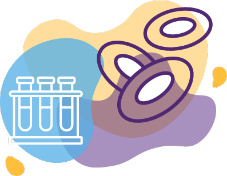
Considerations before treatment
Before beginning gene-therapy treatment, there may be some additional steps to prepare your body to receive the modified
Depending on the type of gene therapy, there may be some pretreatment preparation in the next phase of the journey. This process helps to prepare the body to accept gene therapy and can include:
Ex vivo
- Cell collection
- Chemotherapy, depending on the gene therapy (potentially done during a hospital stay in the period immediately before the gene-therapy procedure)
- A period of isolation (in a hospital or transplant center), if required as part of the gene therapy, as some people may have reduced immune function while the new, modified cells become established
In vivo
- Steroids, which may be given to help reduce the risk of side effects of treatment
Many of these preparatory treatments come with their own side effects. A doctor can help you understand what to expect and help explain the risks and benefits.
- Speak with a doctor and other healthcare team members regarding the risks and benefits of the treatment conditioning path.
- Bring in outside resources to support you. The conditioning process of gene therapy can be a big deal, and it affects each person differently. There are doctors who can help you understand the potential long-term risks. Asking your doctor for sources of support around these topics, including from people who have gone through it, may help.
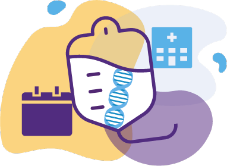
Both ex vivo and in vivo methods can deliver gene therapy to cells. The method selected will depend on what is available and required for that specific disease.
- Discuss the methods of gene therapy with a doctor.
- Talk to a doctor to determine what this process may look like on an individual level.
- Connect with a support group for encouragement and support.
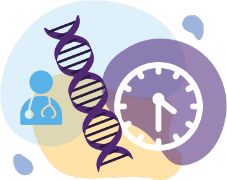
After treatment
After gene therapy, there may be follow-up appointments with various care team members for several years.
- Follow-up appointments are important to monitor the effectiveness of the procedure and check for side effects over time.
- In addition to follow-up care, you may be added to a patient registry. This registry helps gather important information that can help people who will receive gene therapy in the future.
- Consult with your healthcare team for further treatment recommendations or guidance following the procedure.
- Ask for help from your doctor and support groups because they may have resources available to assist you.
- Work with your doctor to set realistic expectations and goals as you continue through your recovery period. Don’t be afraid to ask questions about what recovery may look like for you.
- Open yourself up to receiving help from friends, family members, or home health services, if needed, to help with the physical, mental, and emotional aspects of your journey.
- Join a support group for people who have undergone gene therapy to help adjust to life following this procedure.
There are a lot of factors to consider at this stage and you may have questions. Your healthcare team will continue to be a trusted source of answers during this time. Support groups will help you connect with other patients undergoing similar treatments.
Remember to reach out to your doctor for help when you need it and ask questions along the way.
Helpful resources
You’ve now explored what a gene-therapy treatment journey may look like. As you continue to learn, know that any concerns you have are valid and your voice matters in this process. By asking questions and gathering information, you can feel more comfortable along the way.
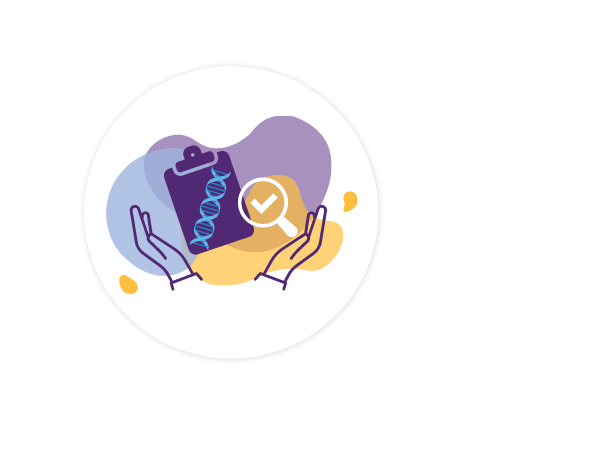
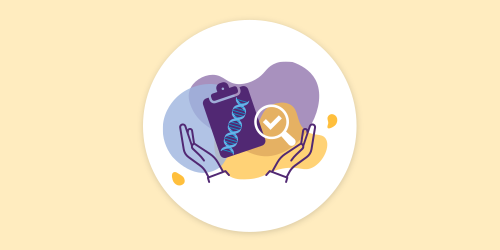
Have questions?
Sometimes when facing a new experience, it’s hard to know what questions to ask. To help you navigate your journey, download the discussion guide below. It will help guide your conversations with your healthcare team.
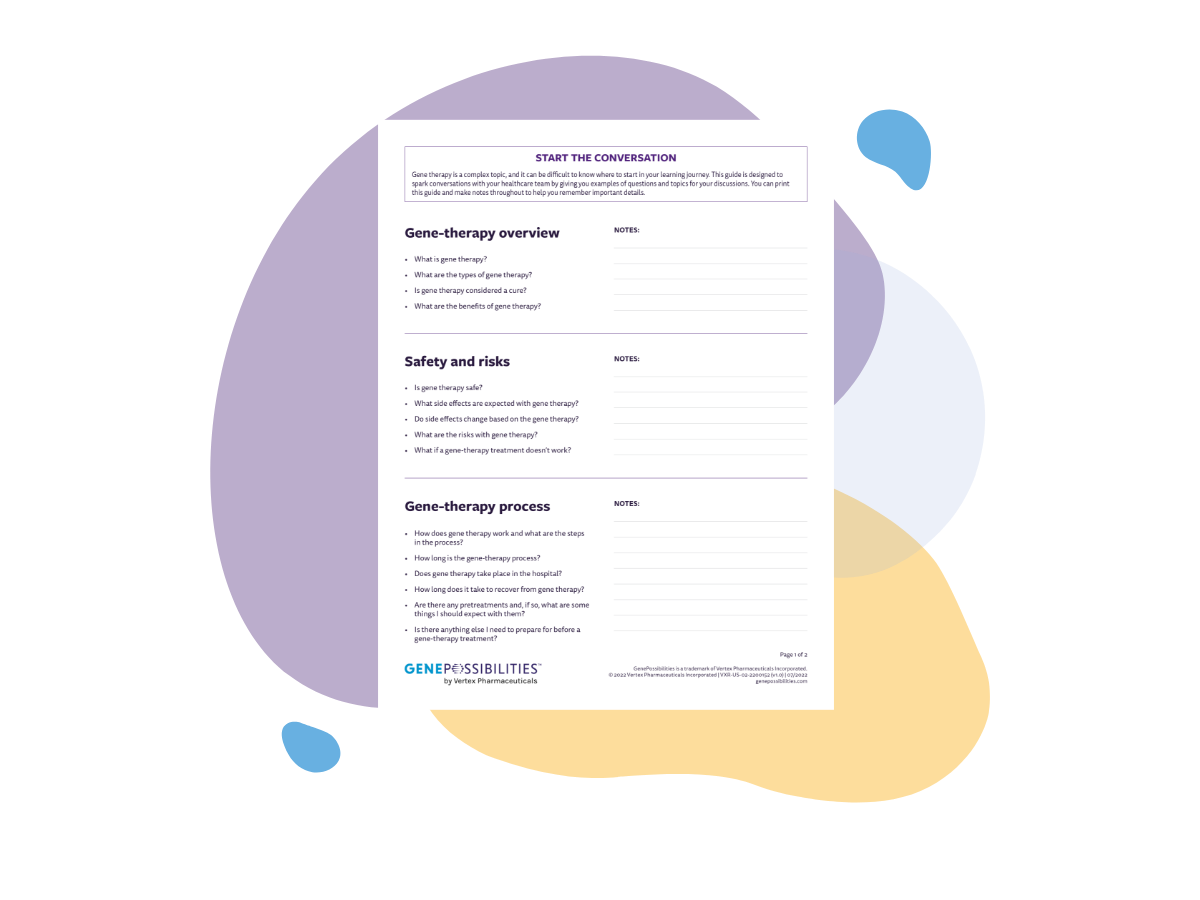
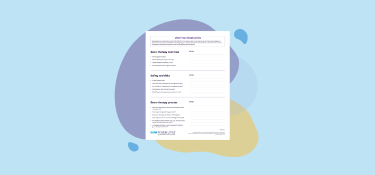
For a closer look into gene therapy and to discover more about how
the process works, start your journey by learning about
Learn more
Sign up to receive the latest resources direct to your inbox.


